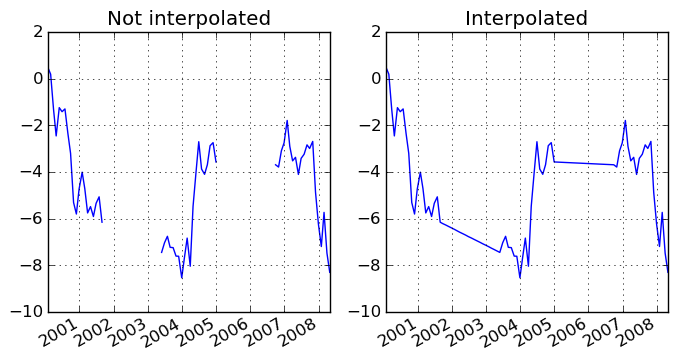Project Seeds
Reminder
Learned Index Structures due Weds (1 week)
Expectations
Checkpoint 1: Project Description (Due Sept 23, 11:59)
- What is the specific challenge that you will solve?
- What metrics will you use to evaluate success?
- What deliverables will you produce?
Checkpoint 2: Progress Report (Due Oct 21, 11:59)
- What challenges have you overcome so far?
- How does your existing work compare to other, similar approaches?
- What design decisions have you made so far and why?
- How have your goals changed from checkpoint 1?
- What challenges remain for you to overcome?
Checkpoint 3: Final Report (Due Dec 9, 11:59)
- What specific challenges did you solve?
- How does your final solution compare to other, similar approaches?
- Were the design decisions you made correct and why?
Decentralized IoT Plumbing
What IoT Means
Lots of devices with...
- Sensors (Temperature, RFID, Cameras)
- Inputs from the outside world.
- Actuators (Robots, Lightbulbs, Conveyor Belts)
- Outputs to affect the outside world.
- Reasonable Compute Resources
- The ability to actually decide how.
Core Idea
- The user gives you...
- A list of nodes (sensors/actuators)
- A list of activities (globally what to do and when)
- Your code compiles and deploys...
- Triggers for nodes (locally what to do and when)
Things to Think About...
- How does the user specify activities to your system?
- Which node(s) is(/are) responsible for required computation?
- How do you get data from where it is to where the compute happens?
- What resources (compute, network) will be needed to execute on your plan?
- How do you optimize the necessary compute for one activity? across all activities?
Uncertainty-Aware Machine Learning

Not all data sources are created equal.

Even within one data set, some data may be more trustworthy than others.
Mixed-Quality Training
How do you train a classifier/neural net/markov model/etc... on mixed-quality data?
- Preprocess the data ("fix" the errors)
- Train separate models on subsets of the data
- Ignore the errors and hope for the best
Problem: Usually easier to "fix" than to label missing data.
But what if the data is already labeled!
Core Idea
- You get...
- A dataset
- Descriptions of uncertainty (what kind is up to you)
- You make...
- A model (of some sort) that is of higher quality using labels than not using them.
Ideally the model is interpretable as well.
Things to Think About
- What statistical properties are you aiming for?
- How should you describe uncertain data?
- How should the model interact with missing data? ... to less reliable data?
- How does uncertainty in the training data affect the model's predictions
Web-of-Trust for Crowdsourced Data

Crowdsourcing
Have a question?
Most people will give you a bad answer.
A few will give you a bad answer.
The average of a bunch of bad answers and a few good answers is a good answer?
Crowdsourcing with Trust!
Web of Trust
Core Idea
- You get...
- A set of participants
- A set of (possibly contradictory) facts stated by each participant
- A set of trust levels for each pair of participants
- You produce...
- A (weighted?) set of facts for each user.
Things to Think About
- How do trust levels combine? (Transitively vs Additively)
- How do derivations of contradictory facts combine (e.g., average trust vs most trusted wins)
- Can the model be maintained incrementally as new facts arrive/users change how much they trust other users?
- What happens for pairs of users who don't know how much they trust each other?
Sensitivity Analysis in Mimir
Problem: Often there is a very large number of possible worlds.
Solution: Break down possible worlds by choices.
Question: Which choices have the biggest impact on a query result?
Sensitivity/Influence
Sensitivity analysis and explanations for robust query evaluation in probabilistic databases.
Kanagal, Li, Deshpande (SIGMOD 2011)
Tracing data errors with view-conditioned causality
Meliou, Gatterbauer, Nath, Suciu (SIGMOD 2011)
Approach
Unit of Choice: Is a tuple (fact) in the source data or not?
- Compute the "derivative" of the query result with respect to the probability of each source tuple.
- Find the tuple that maxizes the derivative.
Mimir
Let queries call a nondeterministic "choice" function that decides which "world" to visit.
SELECT CASE VGTerm("A", ROWID) WHEN 1 THEN "FOO"
ELSE "BAR"
END AS A, Input.*
FROM Input;
VGTerm("A", ROWID) generates a separate value for each row.
Core Idea
- You get...
- A deterministic database
- A non-deterministic query (and a set of tools for sampling from its outputs).
- You produce...
- Which "call" to the query has the biggest influence on the output.
Things to Think About
- What kind(s) of influence measures make sense?
- How to compute influence efficiently for all tuples in parallel?
- Early pruning: Can some influence measures be computed exactly?
Sandboxed Python
Core Idea
- You get...
- Python Code
- Inputs to the code (or a socket)
- Your system produces...
- Output for the code... without calling out of the sandbox.
Things to Think About
- What security guarantees are you providing?
- How can you prove to yourselves that those guarantees are enforced?
- What tooling can you use to wrap/execute python?
In-Class Assignment
- Form a group of 3-4 people that you'll work with for the duration of the semester.
- Come up with a clever group name (or one will be made up for you).
- Challenge: Form a group with people you don't know or don't know well.